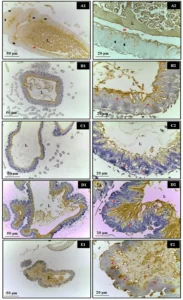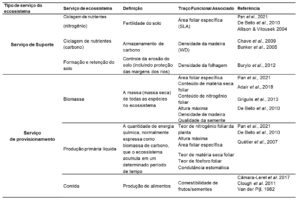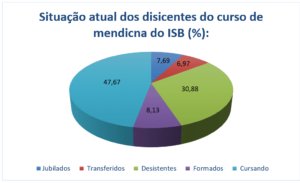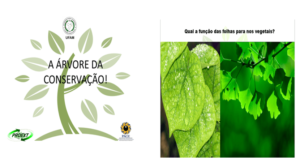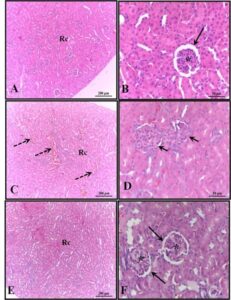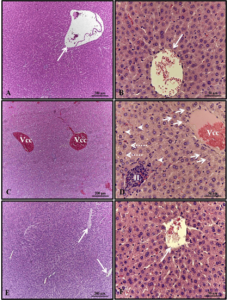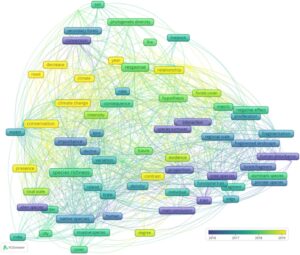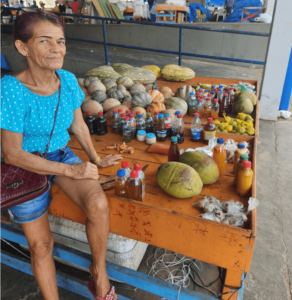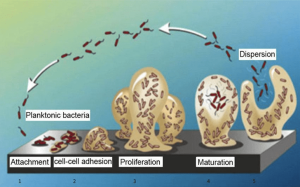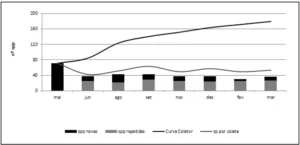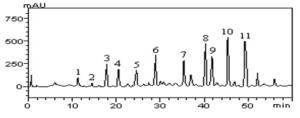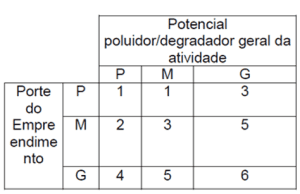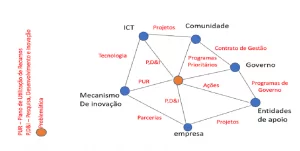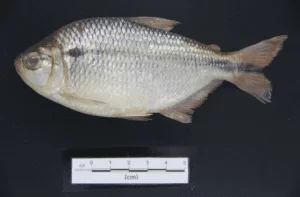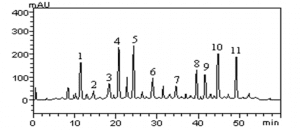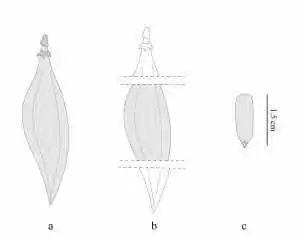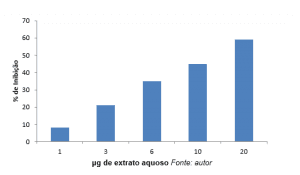SILVA, Pâmela do Espírito Santo [1], FECURY, Amanda Alves [2], OLIVEIRA, Euzébio [3], DENDASCK, Carla Viana [4] DIAS, Claudio Alberto Gellis de Mattos [5]
SILVA, Pâmela do Espírito Santo. Et al. Quantitative overview of a decade of food poisoning cases in northern Brazil. Revista Científica Multidisciplinar Núcleo do Conhecimento. Year 03, Ed. 09, Vol. 07, pp. 121-128 September 2018. ISSN:2448-0959
SUMMARY
Foodborne diseases (ADS) can be defined as those caused by external agents that penetrate the living being, via water or contaminated food. Food and water can be contaminated by toxins both in industrial processing and during human handling. The objective of this work was to compare the fourteen-year data of food poisoning in the northern region of the country with the national data. The research was carried out in the FIOCRUZ Sinitox System database, between 2000 and 2013. Human food poisoning occurs in greater quantity in the urban area and the age group with the highest number of cases of food poisoning was between 20 and 29 years, and 30 and 39 years. Contrary to what occurs in Brazil, in the northern region the number of collective cases was higher than the individual ones, and most cases of human intoxication occur with the female gender. Possibly if there was a higher rate of basic sanitation in the country and if there was a greater stimulus to the teaching of good practices to producers and handlers of ready-to-eat foods, perhaps a positive change could be observed in this scenario.
Keywords: Food poisoning, Epidemiology, Basic sanitation.
INTRODUCTION
Foodborne diseases (ADS) can be defined as those caused by external agents that penetrate the living being, via water or contaminated food. Contamination can be found by chemical or biological agents. Usually most cases occur with the entry of disease-causing microorganisms (pathogenic) into the body (Epifânio et al., 2015).
The transmission of diseases through food can occur in three ways: food poisoning, which consists of the absorption of microbiological toxins left by bacteria and other pathogens in food; food infection, which results from the ingestion of the pathogen along with food; and food toxinfection, where the individual ingests the microorganism and its toxin at the same time (Silva et al., 2013; Mossel; Moreno; Stuijk, 2006).
Food and water can be contaminated by toxins both in industrial processing and during human handling. Toxins causing contamination can be produced by living beings (such as bacteria, viruses and protozoa) or be chemical agents. Viral particles contained in the stool can cause poisoning when ingested. Fecal-oral transmission occurs if there is a lack of personal hygiene or mishandling of food. Food poisoning by bacteria occurs when these microorganisms deposit their toxins in food. Ingestion of these toxins, if harmful, can cause diseases to the host via food. Protozoa, as well as bacteria, can produce substances toxic to humans. The wrong processing of food can cause it to contain these toxins and ingestion causes intoxication (Barreto e Silva, 2006).
Poisoning through chemical agents can occur through foods that have toxins, such as cassava (Manihot esculenta) that has a high rate of cyanide in leaves. If it is ingested in its natural state, it can cause severe and lethal intoxication (Trombini and Leonel, 2014). The wrong rinse for the removal of detergents used in cleaning equipment that processes food can be a cause of contamination of this food, causing intoxication (Wolf, 2017). Riverside populations that have high consumption of fish meat are at risk of food poisoning by heavy metals. Metals such as mercury, which may be present in fish due to environmental pollution, can cause neurological disorders to humans (Junior et al., 2017).
Farmers and people who have direct contact with pesticides may suffer poisoning. Such occurrences are divided into three categories: acute intoxication, which occurs when the individual is exposed to these products for a short time; subacute or overacute intoxication, which consists of exposing the person to stronger agents over a short period of time; and chronic intoxication, which is the exposure of the individual for a long time to a certain type of pesticide. In acute intoxication can occur the appearance of headaches, nausea, vomiting, breathing difficulties, weakness, abdominal cramps, tremors, mental confusion and convulsions. Subacute or overacute intoxication can cause headaches, weakness, malaise, stomach pain, and drowsiness. Chronic intoxication can cause the individual to present weight loss, muscle weakness, depression, irritability, insomnia, anemia, dermatitis, hormonal changes, immune problems, infertility, congenital malformations, abortions, liver and kidney diseases, and respiratory diseases (Silva, 2017).
Poisonings by food additives intentionally added to food by the industry occur when the individual who has consumed a particular product is intolerant to the amount of additives added. As an example, we can mention the tartranzine dye used to give lemon yellow color to candies and caramels. If consumed at high rates it can cause allergic reactions in some people (Barbosa, 2016).
There are several ways in which food can be prevented from being contaminated by micro-organisms and thus that it has the possibility of contaminating the consumer. The most important prevention measures are to sanitize the hands before and after food consumption; purchase natural foods only from a reliable origin; cook food well before consumption. For viral intoxications, prevention measures are specifically vaccines and food handling care (Ministry of Health, 2010).
In Brazil, between 2000 and 2015, 209,240 cases of people sick from food poisoning were recorded. In the southeast region of the country, 40.2% of the cases occurred; in the southern region were 34.8%; in the northeast region 14.8%; and in the Midwest region 6.0%. The northern region of Brazil had 4.3% of the cases registered, which totals approximately 8,997 people with DTA (Brazil, 2015).
Goal
Compare the fourteen-year data of food poisoning in the northern region of the country with national data.
MATERIAL AND METHODS
Research carried out in the fiocruz database Sinitox System. Regional data (http://sinitox.icict.fiocruz.br/dados-regionais) were collected according to the following steps: In Intoxication Data, the "Regional Data" tab was chosen. The following were selected in the "All" Years field, in the "North" region field, and in the "Cases" field. The "Apply" button was selected and data were collected within the items "Registered Cases of Human Intoxication by Toxic Agent", "Registered Cases of Human Intoxication by Toxic Agent and Center", Registered Cases of Human Intoxication by Toxic Agent and Circumstance", "Registered Cases of Human Intoxication by Toxic Agent and Age Group", "Registered Cases of Human Intoxication by Toxic Agent and Sex" , and "Evolution Cases Toxic Agent and Sex". National data (http://sinitox.icict.fiocruz.br/dados-nacionais) were collected according to the following steps: In Intoxication Data, the "National Data" tab was chosen. The following were selected in the "All" Years field, in the "North" region field, and in the "Cases" field. After selecting the "Apply" button, data were collected within the same items described in regional data. The period from 2000 to 2013 was used to compile the data. This was done within the Excel application, a component of the Microsoft Corporation Office suite. Bibliographic research was carried out in books and scientific articles, in the library of the Federal Institute of Education, Science and Technology of Amapá, Macapá Campus, located at: Rodovia BR 210 KM 3, s/n – Bairro Brasil Novo. ZIP Code: 68.909-398, Macapá, Amapá, Brazil.
Results
Graph 1 shows the average number of recorded cases of human intoxication per place of occurrence. Both in Brazil and in the northern region of the country, human food poisoning occurs in greater numbers in the urban area.
Graph 1: Average number of registered cases of human food poisoning per place of occurrence.
Graph 2 shows the average number of recorded cases of human intoxication in the two main capitals of northern Brazil per year. In Manaus the largest number of cases occurred in 2007. In Belém do Pará, the largest number of cases occurred in 2011. In comparison the rates of human food poisoning in the period are equivalent between the two cities.
Figure 2: Average number of registered cases of human food poisoning in two northern capitals per year.
Graph 3 shows the average number of registered cases of human intoxication by age group. Both in Brazil and in the northern region of the country, the age group with the highest number of cases of human food poisoning was between 20 and 29 years, and 30 and 39 years.
Figure 3: Average number of registered cases of human food poisoning by age group.
Graph 4 shows the average number of recorded cases of human intoxication by circumstance. In Brazil, the number of individual cases of intoxication is higher than the number of collective cases. In the northern region the opposite occurs, with the number of collective cases being higher than the individual ones.
Figure 4: Average number of registered cases of human food poisoning by circumstance.
Graph 5 shows the average number of registered cases of human intoxication by gender. In both Brazil and in the northern region, the highest number of cases of human intoxication occurs with the female gender.
Figure 5: Average number of registered cases of human food poisoning by gender.
Graph 6 shows the average number of recorded cases of human intoxication by evolution. Both in Brazil and in the northern region, the data show a higher number of cases of cure.
Graph 6: Average number of registered cases of human food poisoning by evolution.
Discussion
The highest rate of food poisoning occurs in urban areas (Figure 1). This is probably due to the change in the population's eating habits and intraregional migrations. These occurred with people living in rural areas in search of employment and better quality of life. A higher urban population index may influence the rate of people with food poisoning (Magnoni et al, 2016).
The rates of human food poisoning, in the period, are equivalent between the two main cities in the north of the country: Belém do Pará and Manaus (figure 2). The Amazon region, and especially its two largest cities, has the same eating habits. Perhaps this parity is expressed both in food choice and in the rate of intoxication (Brasil, 2015a).
Both in Brazil and in the northern region of the country, the age group with the highest number of cases of human food poisoning was between 20 and 29 years, and 30 and 39 years (figure 3). This is probably the case in these age groups because they represent the economically active population of Brazil. Workers tend to eat in places with ready-made food, increasing the risk and intoxication (Cavalcante et al., 2017; Silva et al., 2017).
In Brazil, the number of individual cases of intoxication is higher than the number of collective cases. In the northern region the opposite occurs, with the number of collective cases being higher than the individual ones (figure 4). The greater number of collective cases in the north of the country is probably due to the population's habit of eating outside the home, increasing the chances of intoxication (Bezerra et al., 2017). The northern region also has a low basic sanitation index, which seems to influence the rates of food poisoning in populations with these habits (Bezerra et al., 2017a).
According to the data, both in Brazil and in the north, the highest number of cases of human intoxication occurs with the female gender (Figure 5). Women who support their families correspond to 37.7% of the Brazilian population and have a longer average life than men. Being economically more active, they probably have a higher chance of poisoning due to eating out (Magnoni et al.; 2016).
According to the graph, both in Brazil and in the north region, the data show a greater number of cure cases (figure 6). Common food poisoning is considered as a low-grade pathology and that many of those affected by it do not seek a health unit. Low-grade intoxication is possibly self-treated without specialized help by achieving cure. Those who seek health services have the same or greater success (Goulart et al., 2016).
CONCLUSION
The migration of people from rural areas to urban areas seems to increase the number of cases of food poisoning in the latter.
In the large cities of northern Brazil, the population has a habit of eating outside the home, consuming ready-made food. The low health index associated with the eating habits of the economically active population, especially women, makes the number of collective intoxications in this region greater than the amount of intoxication in the country.
Despite the intoxication rates, the low degree of virulence of most of them promotes a high degree of cure. Possibly if there was a higher rate of basic sanitation in the country and if there was a greater stimulus to the teaching of good practices to producers and handlers of ready-to-eat foods, a positive change could be observed in this scenario.
REFERENCES
BARRETO, J. R.; SILVA, L. R. Intoxicações alimentares. In: Luciana Rodrigues; Dilton Rodrigues Mendonça; Dulce Emília Queiroz Moreira. (Org). Pronto-atendimento em pediatria. 2ed. Rio de Janeiro: Guanabara Koogan Ltda, 2006, v. 1, p. 709-726.
BEZERRA, I.N.; MOREIRA, T.M.V.; CAVALCANTE, J.B.; SOUZA, A.M.; SICHIER, R. Consumo de alimentos fora do lar no Brasil segundo locais de aquisição. Rev Saúde Pública, v.51, n.15, 2017.
BEZERRA, T.A.; OLINDA, R.A.; PEDRAZA, D.F. Insegurança alimentar no Brasil segundo diferentes cenários sociodemográficos Ciência & Saúde Coletiva, v.22, n. 2, p. 637-651, 2017a.
BRASIL. Ministério da Saúde. Secretaria de vigilância em saúde. Doenças transmitidas por alimentos. 2015 Disponível em < http://portalarquivos.saude.gov.br/images/pdf/2015/novembro/09/Apresenta—-o-dados-gerais-DTA-2015.pdf>. Acesso em 29 de setembro de 2017.
BRASIL. Ministério da Saúde. Secretaria de vigilância em saúde. A Amazônia e a comida de verdade. 2015a Disponível em < http://www4.planalto.gov.br/consea/comunicacao/artigos/2015/a-amazonia-e-a-comida-de-verdade>. Acesso em 29 de setembro de 2017.
CAVALCANTE, J.B.; MOREIRA; T.M.V.; MOTA,C.C.; PONTES, C.R.; BEZERRA, I.N. Ingestão de energia e nutrientes segundo consumo de alimentos fora do lar na Região Nordeste: uma análise do Inquérito Nacional de Alimentação 2008-2009. Rev Bras Epidemiol 20(1): 115-123, 2017.
EPIFÂNIO, I.S., SANTOS, C.V.B.B., LIMA, M.L.S., VICENTE, M.J.M., BRANDESPIM, D.F. Diagnóstico de risco relacionado a doenças transmitidas por alimentos no programa de saúde da família (PSF). Ciênc. vet. tróp., v.18, n 3, 2015.
GOULART, A. E. R.; LACERDA, I. C. A.; DIAS, R. S. Potencial risco de intoxicação alimentar por Staphylococcus spp. enterotoxigênicos isolados de bolos com cobertura e recheio. Periódico Cientifico do Núcleo de Biociências. Centro Universitário Metodista Izabela Hendrix., v.06, n.11, 2016.
JUNIOR, J.M.F.C.; LIMA, A.A.S. JUNIOR, D.R.; KHOURY, E.D.T.; Givago da Silva SOUZA, G.S.; Luiz Carlos de Lima SILVEIRA, L.C.L.S.; PINHEIRO, M.C.N. Manifestações emocionais e motoras de ribeirinhos expostos ao mercúrio na Amazônia. Rev bras Epidemiol. 20(2): 212-224, 2017.
MINISTÉRIO DA SAÚDE. Manual Integrado de Vigilância, Prevenção e Controle de Doenças Transmitidas por alimentos. Série A. Normas e Manuais Técnicos. Brasília – DF: MS, 2010. 160 p.
MAGNONI, D.; TARDIOLI, M.; ZAGATO, M.; MIYAGI, M.; TAKAYAMA, P.; MOURA, S.; KOVACS, C.; CAMELO, V.; BARBOSA, M.; CUKIER, C. Segurança alimentar e informação nutricional podem reduzir a intoxicação alimentar na alimentação fora do lar. Rev Bras Nutr Clin 2016; 31 (2): 91-6.
MOSSEL, D. A. A.; MORENO, B; STUIJK, C. B. Microbiologia de los Alimentos, 2 ed. Acríbia, 703p., 2006.
SILVA, E.P.; SILVA, G.M.; NORBERG, A.N., OLIVEIRA, J,T.M., SANTA HELENA, A.A. , SANCHES, F.G., SERRA-FREIRE, M.M. Análise Qualitativa e Quantitativa de Produtos de Confeitarias Comercializados na Região da Baixada Fluminense, Estado Do Rio de Janeiro, Brasil, Quanto à Poluição Por Staphylococcus aureus. Revista Saúde Física & Mental- UNIABEU v.3 n.2 , 2013.
SILVA, J.H., GIANSANTE, S., SILVA, R.C.R., SILVA, G.B., SILVA, L.B., PINHEIRO, L.C.B. Perfil epidemiológico dos acidentes com animais peçonhentos em Tangará da Serra-MT, Brasil (2007-2016). Journal Health NPEPS. , n.2, p.5-15, 2017.
TROMBINI, F. R. M.; LEONEL, M.; Composição físico-química e propriedades tecnológicas da farinha de folhas de mandioca. Energ. Agric., Botucatu, vol. 29, n.1, p.76-81, 2014.
WOLF, C. Estudo de caso da higiene (limpeza e desinfecção) em matadouro-frigorífico de bovinos, suínos e ovinos, 2017. 30f. Monografia (Especialização em Produção, Tecnologia e Higiene em Alimentos de Origem Animal) – Faculdade de Veterinária/UFRGS, Porto Alegre, Rio Grande do Sul.
[1] High school student. Technical Course in food Federal Institute of Basic Education, Technical and Technological Amapa (IFAP).
[2] Biomedical. PhD in Tropical Diseases. Researcher Professor at the State University of Amapa (UNIFAP).
[3] Biologist. Doctor of Tropical Diseases. Researcher Professor at the Federal University of Pará (UFPA).
[4] Theologian. PhD in Psicanalise Clinica. Researcher at the Center for Research and Advanced Studies, Sào Paulo, SP.
[5] Biologist. PhD in Theory and Behavior Research. Researcher Professor at the Federal Institute of Basic, Technical and Technological Teaching of Amapa (IFAP).







